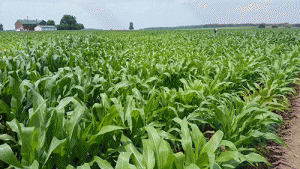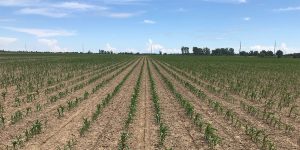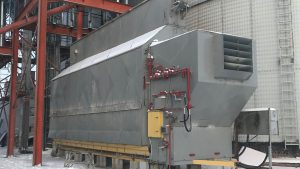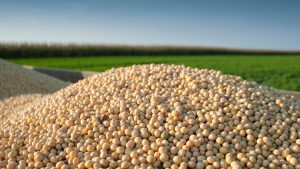Planter tune-up
ITEMS TO CONSIDER AHEAD OF SPRING PLANTING
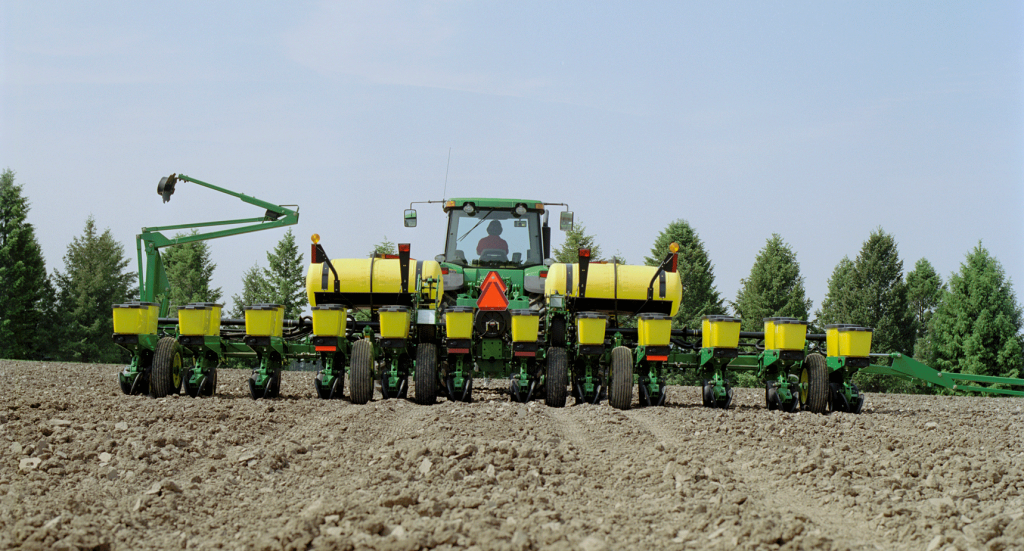
BEFORE YOU START in the field, make sure you spend the time needed to thoroughly inspect and fix your planter for the 2020 planting season. Just pulling the planter out of the shed and greasing is not enough. Setting up the planter is a key step in assuring you maintain your maximum yield through stand establishment. Mistakes can cost dearly in down time or in limiting your yield potential.
Planter tires – right size and good condition. Check air pressure and adjust to correct pressure, consult your manual. This is the start of making sure the planter is level; next, check planter frame for levelness.
Parallel linkage arms – check for free smooth movement up and down. Also check side to side movement, if too much movement occurs this indicates bushings are worn and may need replacing. Also make sure all linkage arms are straight and not bent.
Planter drive chains – check that the chains are not binding, make sure all chains run smoothly and are not worn out. The drive chains need to run smooth to help make the planter run without excess vibrations. Jumps and jerks will affect plantability and give you skips in your stands. Oil the chains and check the gears.
Gauge wheels – need to be free moving and slide up and down snuggly in order to make sure the row unit runs at the set depth. When checking, pull wheels up and check for sideways movement. If too much movement, tighten the arms.
Double disc openers – need to touch each other for a 1.5” to 2” distance along the disc tips. This helps to create a V seed trench. If the discs don’t touch, they could be worn down or miss aligned. Measure the diameter of the discs and make sure they fall within the equipment manufactures guidelines, typically if they are smaller than 14.5 inches they need to be replaced. Proper V trench is essential for uniform seed placement in the trench and the start to best seed to soil contact.
Seed tube guard – protects the seed tube. Worn tube guards need to be replaced before wear starts on the seed tube.
Seed tube – inspect all seed tubes to make sure they are not damaged, if they are worn or cracked they can cause seed bounce and cause uneven seed spacing in the trench. If they are worn, you will also need to replace the seed tube guards as seed tube wear is an indication of worn out guards.
Seed singulation – make sure they have been bench tested so you know the accuracy of your row units. Typical items that are checked are the condition of the knock off brushes, the dimple wear on the backing plate, and spring tension (on finger units). All of these help reduce the amount of double seeds being planted. Air planters need inspection of the brushes and plates for wear and check air system that correct pressures can be maintained uniformly along all planter units. All units need to be checked to ensure the drive clutch aligns and doesn’t cause slips leading to seed skips in the field. Realign as required.
Closing wheels – need to be freely rolling. If wheels are loose with too much play, the bushings will need to be replaced. Make sure the double disc opener lines up in the middle of the closing wheels.
Starter fertilizer disc and tubes – need to be operational and in the right position. This also needs to be checked when in the field, but make sure it is set up properly before you go to the field. If you are using dry starter fertilizer, make sure you have the fertilizer band far enough away from the seed as to prevent fertilizer burn on the seed. Most growers use the 2×2 distance from the seed, but this depends on your source of fertilizer and rate, check with your supplier. Ever seen seed that looked dead but had a bit of whitish crystals on it? That’s fertilizer burn. It isn’t poor seed, it’s fertilizer that was placed too close to the seed. This may have occurred due to loose coulters that moved while planting, or something hit them. If you are using liquid fertilizer, check your pump and drive chains.
When you think the planter is ready, make a test run and check that the double disc opener is in the middle of the closing wheels and not off to one side. If they are, realign them or check why they are not aligned: is something bent or broken? Closing wheels need to be centred over the double disc opener so the seed has uniform soil pressure on both sides equally.
When you start planting, check the level of the planter tool bar. Planters need to run level so the correct pitch is placed on the row unit. A level unit will make the correct V trench with the double disc opener in the correct location in the soil and place the seed uniformly in the bottom of the trench. When the tool bar is not level, the row unit will have too much pitch and will have the disc contact location too far forward or backwards causing the trench to be flat bottom or W shape, this in turn causes seed placement to be sporadic.
When in the field, check your down force by checking the gauge wheels and adjust as required for the conditions. Too much pressure that prevents you from rotating the gauge wheels will also cause excess wear and tear on the equipment and puts to much pressure on the seed trench leading to side wall compaction. If the gauge wheels run too freely, there is not enough down force to actually position the row unit and the unit will float causing uneven planting depths. Gauge wheels should be snug, not tight or loose.
Uniform seed placement is the goal of your finely tuned planter. In order to make sure the planter is operating properly, do a few field checks and check for seed placement in the row. Is it at the right depth? Does it have proper seed to soil contact? Is there enough soil moisture at this depth? Is the fertilizer placement correct? If not, make the adjustments for your conditions so you can maximize your crop potential. If the planter is bouncing in the field, slow down. The excessive movement and vibration not only places the seed at variable depth, but can also cause seeds to be dislodged from your singulator creating skips in the field.
Marty Vermey is Grain Farmers of Ontario senior agronomist. •























